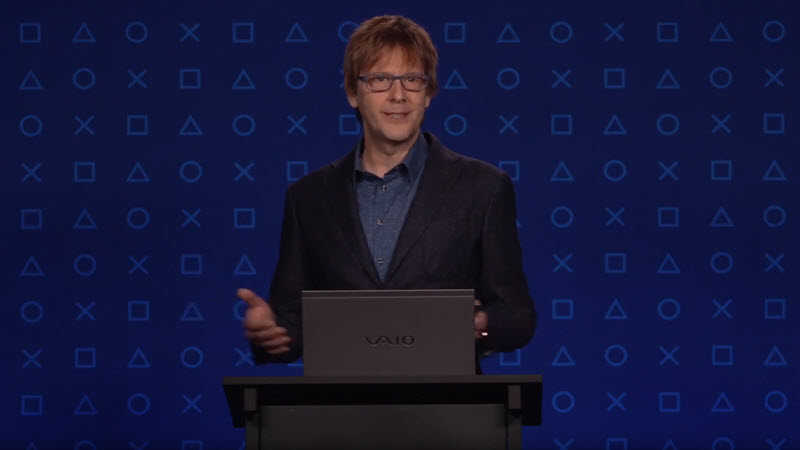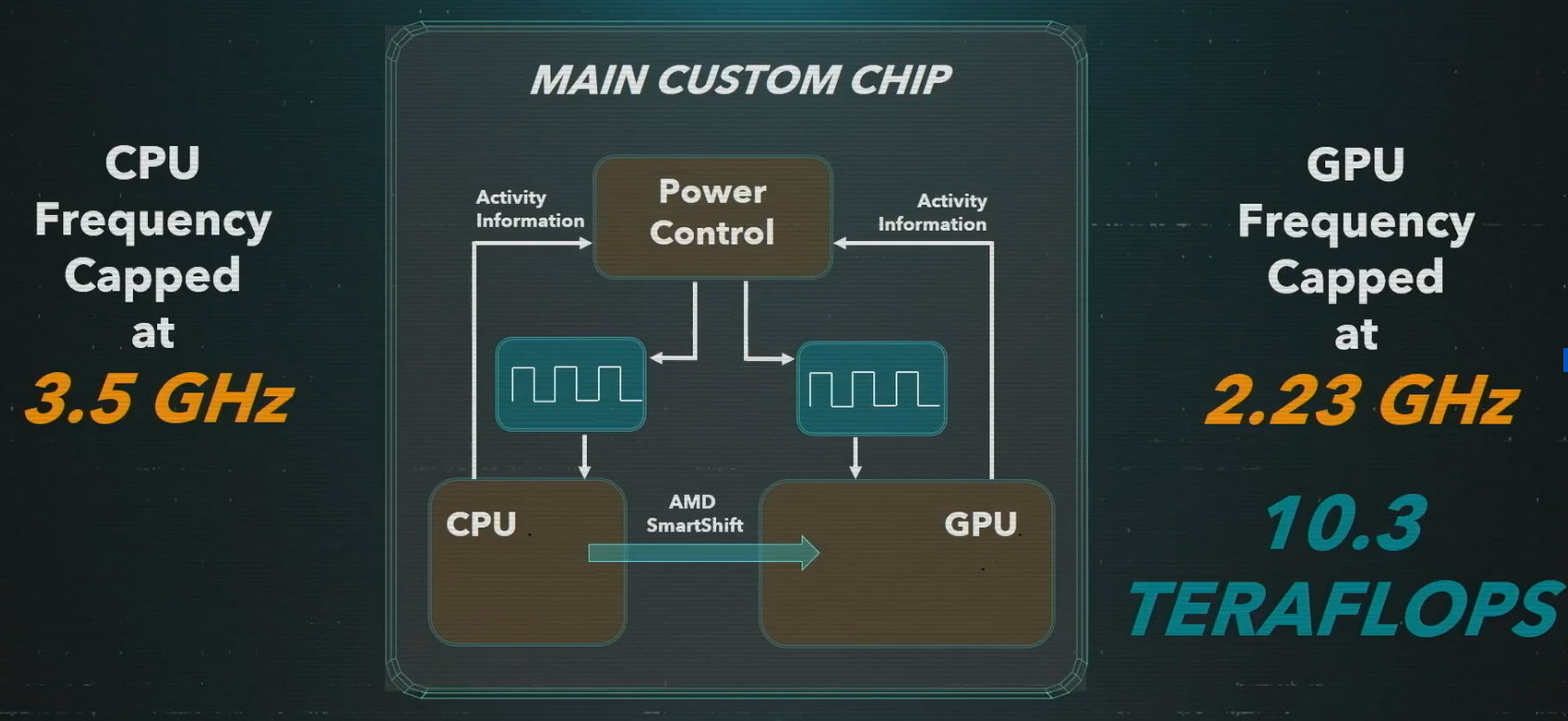
Finally the speculation can end.
With millions of fans chomping at the bit to learn about the console, the PlayStation team debuted a pre-recorded presentation from PS5 Lead Architect Mark Cerny which detailed the PlayStation 5 hardware and the direction the teams are taking with its development. Though the presentation was a very strange format and very robotic, Cerny provided a wide range of in-depth details.
It’s an impressive box and when looked at in combination with the Xbox Series X, console gamers are in for a real treat next-generation.
Below we’ve summarized all of the key details for you. So if you’re not the type that wants to sit through an hour long presentation, don’t worry as we have you covered.
Hardware Specs and Graphical Power

The PlayStation 5 is a very powerful system with some advanced features, similar to what we’ve seen with the Xbox Series X. It’s GPU power is 10.28 teraflops built on custom RDNA 2 architecture from AMD. What’s interesting here however is that it’s only using 36 compute units at a faster frequency as compared to the 52 in the Series X.
It’s also worth noting that 2.23ghz and 10.3 teraflops is the max power it can achieve. Cerny was careful to state “we expect the GPU to spend most of its time at or close to that frequency”.

The PS5 also has a feature called “Boost” which is likely what AMD referred to as “special sauce” months ago. It’s an interesting feature and one that developers will have to take advantage of to push the limits of the PS5. Here’s an excerpt from Digital Foundry’s article on the feature.
So how does boost work in this case? Put simply, the PlayStation 5 is given a set power budget tied to the thermal limits of the cooling assembly. “It’s a completely different paradigm,” says Cerny. “Rather than running at constant frequency and letting the power vary based on the workload, we run at essentially constant power and let the frequency vary based on the workload.”
An internal monitor analyses workloads on both CPU and GPU and adjusts frequencies to match. While it’s true that every piece of silicon has slightly different temperature and power characteristics, the monitor bases its determinations on the behaviour of what Cerny calls a ‘model SoC’ (system on chip) – a standard reference point for every PlayStation 5 that will be produced.
“Rather than look at the actual temperature of the silicon die, we look at the activities that the GPU and CPU are performing and set the frequencies on that basis – which makes everything deterministic and repeatable,” Cerny explains in his presentation. “While we’re at it, we also use AMD’s SmartShift technology and send any unused power from the CPU to the GPU so it can squeeze out a few more pixels.”
One notable comparison to the Series X is that Cerny doesn’t mention anything about machine learning or variable rate shading; features that the Xbox team has been touting for the Xbox Series X. However, hardware ray tracing seems to be very similar between the two. Again, from Digital Foundry:
While Cerny doesn’t mention technologies such as machine learning support or variable rate shading, PS5 does indeed deliver hardware-accelerated ray tracing via its Intersection Engine, which Cerny says is “based on the same strategy as AMD’s upcoming PC GPUs”. There had been speculation of an external block, but that’s not the case – like next-gen Navi and Xbox Series X, the RT hardware is built into the shaders and so fully integrated.
It continues to get interesting in the hardware space when looking at the PS5’s SSD. It’s a proprietary unit and while it delivers incredible speed for a console (5.5gb/s), it’s an odd size at 825GB. Yes you read that right. It is not 500GB nor 1TB. It is 825GB out of the box.
And similar to the Series X, due to the speed, PS5 games will need to run off of that drive. While external drives can be used for PS4 backwards compatibility, PS5 games will need to be on the internal drive (or a future expansion).

Cerny did mention that you will be able to expand the storage by adding off the shelf drives into the PS5, but that they will be required to be faster than the drive in the PS5 already. Because of this, he says that more information will come in the future as they will have to ensure compatibility.
But out of the gate, it’s clear the PS5 team was focused on speed and the reduction of bottlenecks for developers which is impressive.
Backwards Compatibility
Cerny did confirm what we all expected; the PS5 will be able to natively play PS4 games (in both PS4 and PS4 Pro mode). However, what was disappointing is that not all PS4 games will be supported. According to Cerny, “almost all of the top 100 PS4 games will be available to play at launch”.
PlayStation will need to be very clear about this going forward as we know fans are expecting their full library to come forward with them.

Audio Specific Focus
Cerny then spoke to the audio goals for the PlayStation 5, recognizing that last generation the PS4 was almost a step backwards in terms of audio from a processing perspective.
Enter Tempest 3D AudioTech. Using this new technology, the sound design in games can be far more precise and Cerny speaks to sound “locality”. Again from Digital Foundry:
In short, the Tempest Engine opens the door to a genuine revolution in game audio – and while there are challenges ahead in seeing the system reach is fullest potential, one thing you don’t need to worry about is buying into high-end audio hardware to enjoy the experience. In the short term, the simple solution will be to use headphones: two ears, two speakers – it’s all you need and the Tempest Engine will handle the rest. Going forward, Sony is optimistic about great results from virtual surround from TV speakers and sound bars, with multi-speaker systems also due for support.
And what’s most impressive is that the processing of this audio will be much less labor intensive for the system itself.
“Where we ended up is a unit with roughly the same SIMD power and bandwidth as all eight Jaguar cores in the PS4 combined,” Mark Cerny reveals in his presentation. “If we were to use the same algorithms as PSVR, that’s enough for something like five thousand sound sources – but of course we want to use more complex algorithms, and we don’t need anything like that number of sounds.”
He then went into HRTF – Head Related Transfer Function where the long-term goals are to be able to create unique sound that fits each individual user. For audiophiles, it was incredibly interesting.

Summary
It was a dry presentation, and sadly we didn’t see the unit itself, but at least we now know the full hardware specs of the PlayStation 5 so the rumors can be laid to rest.
The PS5 is no doubt an impressive piece of kit and what we’re most excited about here at SG, is the fact that both the Xbox and PlayStation teams are pushing the boundaries of what’s been done at the console level and using technology that is much more at the forefront of what’s available in the PC realm (and in some cases even more advanced). In comparison to the PC market when the PS4 and Xbox One launched, these consoles will be more future proofed.
They have also gone to extreme lengths to empower developers to build more advanced games and worlds. We’ve heard it from Xbox repeatedly and Cerny echoed the same today. As development studios learn the ins and outs of these consoles and leave last generation in the past over the next 12-24 months, we’ll begin to see some truly transformative experiences that weren’t possible in the past.
It’s an incredibly exciting time to be a gamer. As with you, we’re simply enjoying this ride and as always, we’ll continue to keep you up to date as we learn more details!
Here is the full presentation if you missed it and would like to watch!



I am drooling over the audio. It’s going to be such a massive upgrade. I know what they are trying to accomplish, as other companies are pursuing this same goal in other areas of audio.
Smyth Research A16 comes to mind, but that’s not something 99.99% of gamers would pay for at $3,999. I was lucky and got in at the pre-order price, far below its current price. Still waiting on delivery of mine. Small outfit that hand makes each one. I’ve been waiting a long time for it!
If Sony can get even a quarter of the capability of the A16, along with ray traced audio, we are all in for a treat. I really hope they push this tech as far as possible. Even bare bones, it’s a huge jump in quality. Be excited!
Microsoft is planning upgrades as well, but they haven’t gotten this detailed yet. I’m more excited for audio upgrades than graphics. It’s been exciting so far!